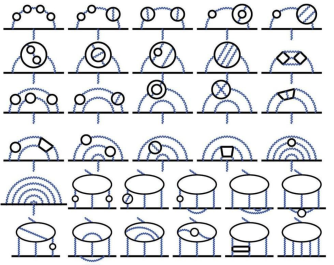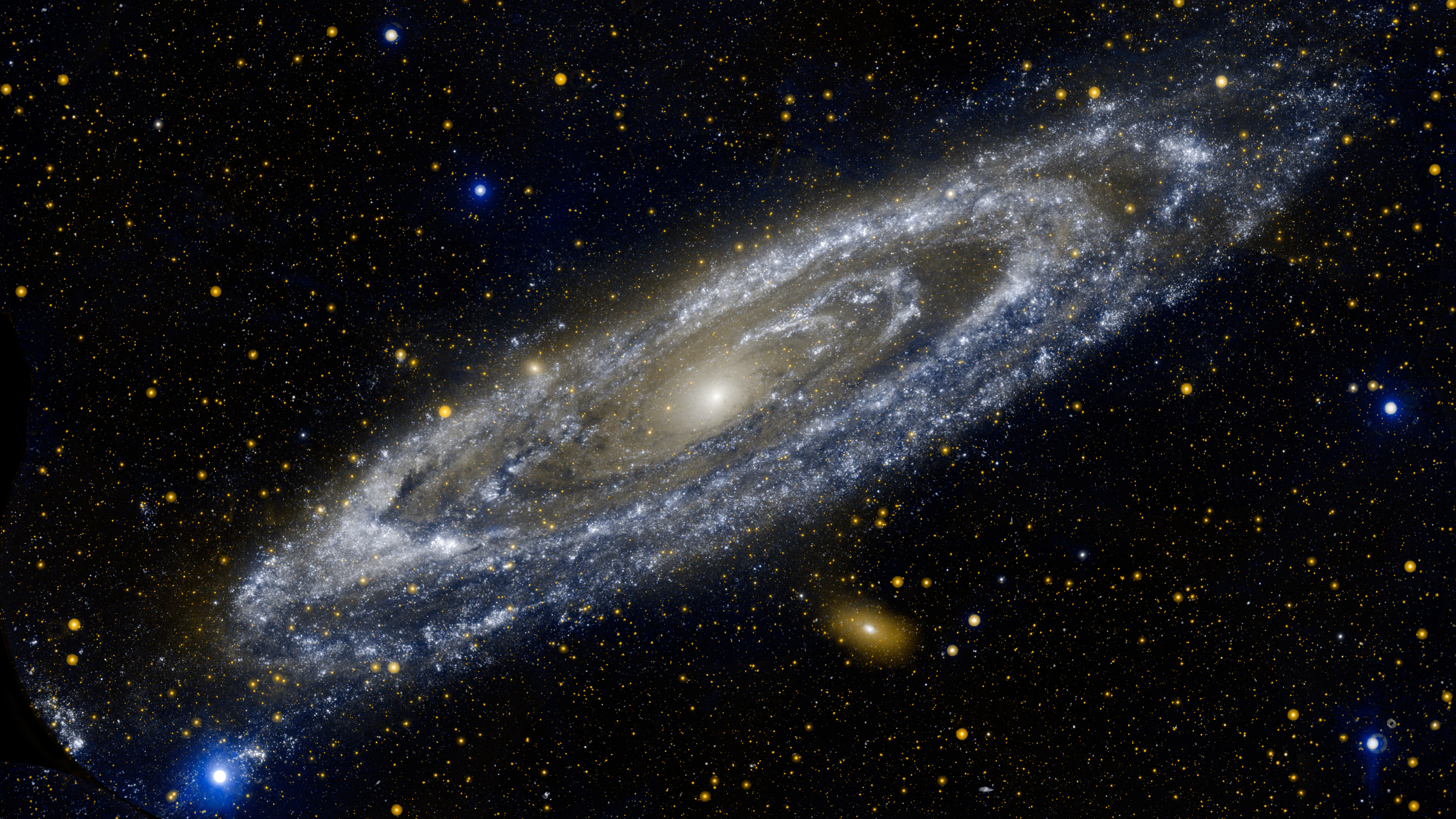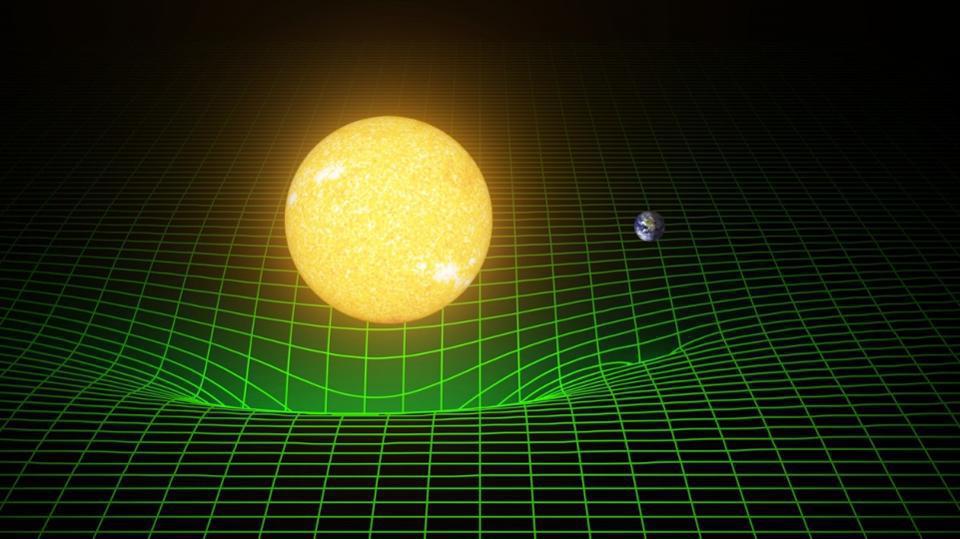Could fundamental physical constants not be constant across space and time?

Credit: Spectrum: NASA/CXC/Univ. of California Irvine/T. Fang. Illustration: CXC/M. Weiss
- We assume that physical constants do not change from time to time or location to location.
- Measurements aimed at calculating the fine-structure constant, however, challenge this assumption.
- A big puzzle remains unsolved to this day: why do quasars appear to show small but significant differences in the inferred value of the fine-structure constant?
Whenever we examine the universe in a scientific manner, there are a few assumptions that we take for granted as we go about our investigations. We assume that the measurements that register on our devices correspond to physical properties of the system that we are observing. We assume that the fundamental properties, laws, and constants associated with the material universe do not spontaneously change from moment to moment. And we also assume, for many compelling reasons, that although the environment may vary from location to location, the rules that govern the universe always remain the same.
But every assumption, no matter how well-grounded it may be or how justified we believe we are in making it, has to be subject to challenge and scrutiny. Assuming that atoms behave the same everywhere — at all times and in all places — is reasonable, but unless the universe supports that assumption with convincing, high-precision evidence, we are compelled to question any and all assumptions. If the fundamental constants are identical at all times and places, the universe should show us that atoms behave the same everywhere we look. But do they? Depending on how you ask the question, you might not like the answer. Here is the story behind the fine-structure constant, and why it might not be constant, after all.

When most people hear the idea of a fundamental constant, they think about the constants of nature that are inherent to our reality. Things like the speed of light, the gravitational constant, or Planck’s constant (the fundamental constant of the quantum universe) are often the first things we think of, along with the masses of the various indivisible particles in the universe. In physics, however, these are what we call “dimensionful” constants, which means that they rely on our definitions of quantities like mass, length, or time.
An alternative way to conceive of these constants is to make them dimensionless instead: so that arbitrary definitions like kilogram, meter, or second make no difference to the constant. In this conception, each quantum interaction has a coupling strength associated with it, and the coupling of the electromagnetic interaction is known as the fine-structure constant and is denoted by the symbol alpha (α). Fascinatingly enough, its effects were detected before quantum physics was even remotely understood, and remained wholly unexplained for nearly 30 years.

In 1887, arguably the greatest null result in the history of physics was obtained, via the Michelson-Morley experiment. The experiment was brilliant in conception, seeking to measure the speed of Earth through the “rest frame” of the universe by:
- sending light beams in perpendicular directions,
- bringing them back together,
- thereby constructing an interference pattern,
- and measuring how that pattern shifted as the experimental apparatus was rotated.
Michelson originally performed a version of this experiment by himself back in 1881, detecting no effect but recognizing the need to improve the experiment’s precision.
Six years later, the Michelson-Morley experiment represented an improvement by more than a factor of ten, making it the most precise electromagnetic measuring device at the time. While again, no shift was detected, demonstrating no need for the hypothesized aether, the apparatus they developed was also spectacular for measuring the spectrum of light emitted by various atoms. Puzzlingly, where a single emission line was expected to occur at a specific wavelength, sometimes there was just a single line, but at other times there were a series of narrowly-spaced emission lines, providing empirical evidence (but without a theoretical motivation) for a finer-than-expected structure to atoms.

What is actually happening became clearer with the development of modern quantum mechanics. Electrons orbit around the atomic nucleus in fixed, quantized energy levels only, and it is known that they can occupy different orbitals, which correspond to different values of orbital angular momentum. These are required to balance by both relativity and quantum physics. First derived by Arnold Sommerfeld in 1916, it was recognized that these narrowly-spaced lines were an example of splitting due to the fine-structure of atoms, with hyperfine structure from electron/nucleon interactions discovered shortly thereafter.
Today, we understand the fine-structure constant in the context of quantum field theory, where it is the probability of an interacting particle having what we call a radiative correction: emitting or absorbing an electromagnetic quantum (that is, a photon) during an interaction. We typically measure the fine-structure constant, α, at today’s negligibly low energies, where it has a value that is equal to 1/137.0359991, with an uncertainty of ~1 in the final digit. It is defined as a dimensionless combination of dimensionful physical constants: the elementary charge squared divided by Planck’s constant and the speed of light, and the value we measure today is consistent across all sufficiently precise experiments.

At high energies in particle physics experiments, however, we notice that the value of α gets stronger at higher energies. As the energy of the interacting particle(s) increases, so does the strength of the electromagnetic interaction. When the universe was very, very hot — such as at energies achieved just ~1 nanosecond after the Big Bang — the value of α was more like 1/128, as particles like the Z-boson, which can only exist virtually at today’s low energies, can more easily be physically “real” at higher energies. The interaction strength is expected to scale with energy, an instance where our theoretical predictions and our experimental measurements match up remarkably well.
However, there is an entirely different way to measure the fine-structure constant at today’s low energies: by measuring spectral lines, or emission and absorption features, from distant light sources throughout the cosmos. As background light from a source strikes the intervening matter, some portion of that light is absorbed at specific wavelengths. The exact wavelengths that are observed depend on a number of factors, such as the redshift of the source but also on the value of the fine-structure constant.

If there are any variations in α, either over time or directionally in space, a careful examination of spectral features from a wide variety of astrophysical sources, particularly if they span many billions of years in time (or billions of light-years in distance), could reveal those variations. The most straightforward way to look for these variations is through quasar absorption spectroscopy: where the light quasars, the brightest individual sources in the universe, encounter every intervening cloud of matter that exists between the emitter (the quasar itself) and the observer (us, here on Earth).
There are very intricate, precise energy levels that exist for both normal hydrogen (with an electron bound to a proton) and its heavy isotope deuterium (with an electron bound to a deuteron, which contains both a proton and a neutron), and these energy levels are just slightly different from one another. If you can measure the spectra of these different quasars and look for these precise, very-slightly-different fine and hyperfine transitions, you would be able to measure α at the location of the quasar.

If the laws of physics were the same everywhere throughout the universe, then based on the observed properties of these lines, which includes:
- the same wavelengths and frequencies,
- the same ratios between transitions within atoms,
- and the same sets of absorption features across a wide variety of distances,
you would expect to be able to infer the same value of α everywhere. The only difference you would anticipate would be redshift-dependent, where all the wavelengths for a specific absorber would be systematically shifted by the same redshift-dependent factor.
Yet, that is not what we see. Everywhere we look in the universe — at every quasar and every example of fine or hyperfine structure in the intervening, absorptive gas clouds — we see that there are tiny, minuscule, but non-negligible shifts in those transition ratios. At the level of a few parts-per-million, the value of the fine-structure constant, α, appears to observationally vary. What is remarkable is that this variation was not expected or anticipated but has robustly shown up, over and over again, in quasar absorption studies going all the way back to 1999.

Beginning in 1999, a team of astronomers led by Australian astrophysicist John K. Webb started seeing evidence that α was different from different astronomical measurements. Using the Keck telescopes and over 100 quasars, they found that α was smaller in the past and had risen by approximately 6 parts-per-billion over the past ~10 billion years. Other groups were unable to verify this, however, with complementary observations from the Very Large Telescope showing the exact opposite effect: that the fine-structure constant, α, was larger in the past, and has been slowly decreasing ever since.
Subsequently, Webb’s team obtained more data with greater numbers of quasars, spanning larger fractions of the sky and cutting across cosmic time. A simple time-variation was no longer consistent with the data, as variations were inconsistent from place-to-place and did not scale directly with either redshift or direction. Overall, there were some places where α appeared larger than average and others where it appeared smaller, but there was no overall pattern. Even with the latest 2021 data, the few-parts-in-a-million variations that are seen are inconclusive.

It is often said that “extraordinary claims require extraordinary evidence,” but the uncertainties associated with each of these measurements were at least as large as the suspected signal itself: a few parts-per-million. In 2018, however, a remarkable study — even though it was only of one system — had the right confluence of properties to be able to measure α, at a distance of 3.3 billion light-years away, to a precision of just ~1 part-per-million.
Instead of looking at hydrogen and deuterium, isotopes of the same element with the same nuclear charges but different nuclear masses, researchers using the Arecibo telescope in one of its last major discoveries found two absorption lines of a hydroxyl (OH-) ion: at 1720 and 1612 megahertz in frequency around a rare and peculiar blazar. These absorption lines have different dependencies on the fine-structure constant, α, as well as the proton-to-electron mass ratio, and yet these measurements combine to show a null result: consistent with no variation over the past ~3 billion years. These are, to date, the most stringent constraints on tiny changes in the fine-structure constant’s value from astronomy, consistent with no effect at all.

The observational techniques that have been pioneered in quasar absorption spectroscopy have allowed us to measure these atomic profiles to unprecedented precision, creating a puzzle that remains unsolved to this day: why do quasars appear to show small but significant differences in the inferred value of the fine-structure constant between them? We know there has been no significant variation over the past ~3 billion years, from not only astronomy but from the Oklo natural nuclear reactor as well. In addition, the value is not changing today to 17 decimal places, as constrained by atomic clocks.
It remains possible that the fundamental constants did actually vary a long time ago, or that they varied differently in different locations in space. To untangle whether that is the case or not, however, we first have to understand what is causing the observed variations in quasar absorption lines, and that remains an unsolved puzzle that could just as easily be due to an unidentified error as it is to a physical cause. Until there is a confluence of evidence, where many disparate observations all come together to point to the same consistent conclusion, the default assumption must remain that the fundamental constants really are constant.





